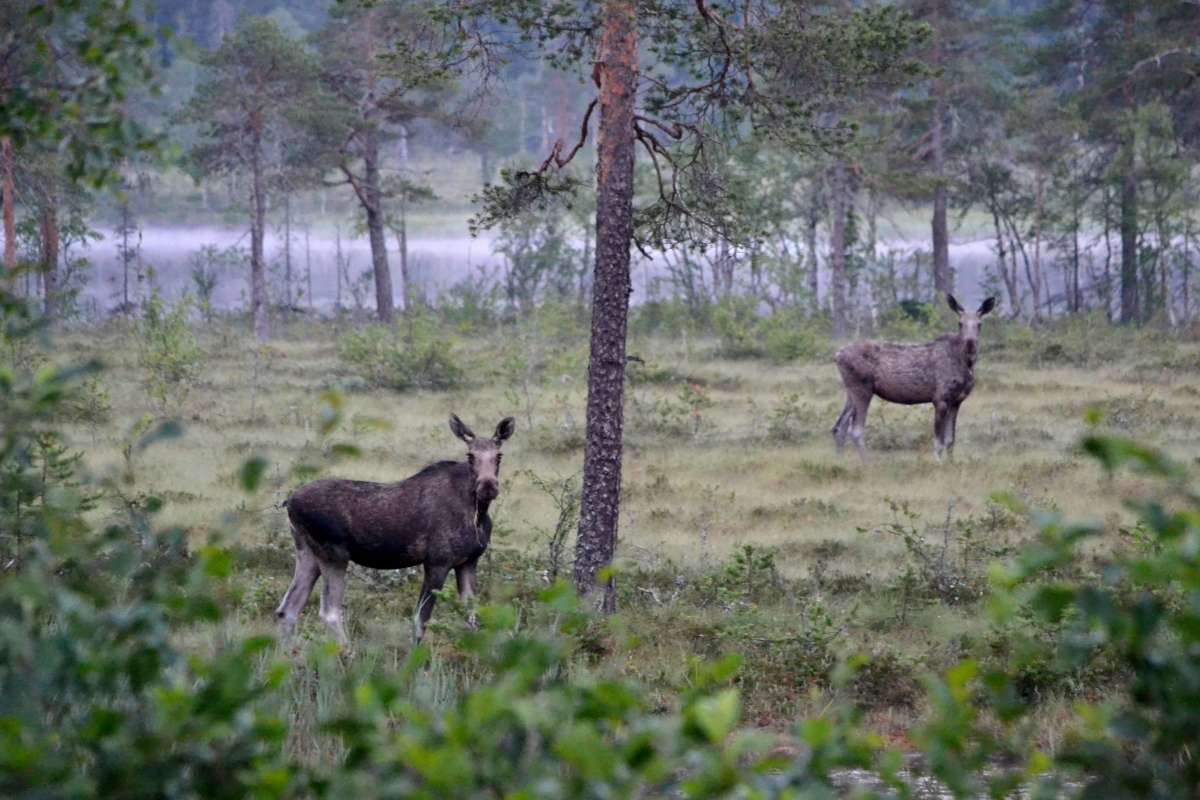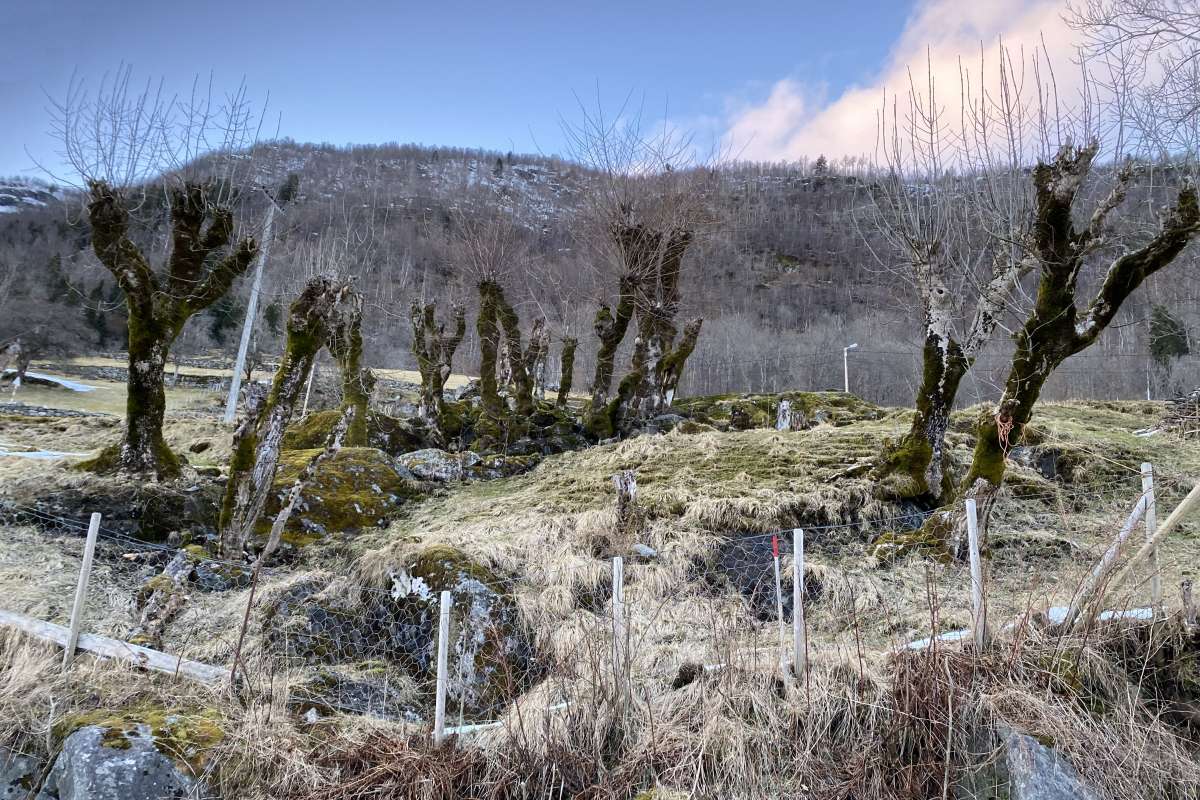Norwegian Christmas traditions: A rich cultural heritage shaped by food, drink and nature
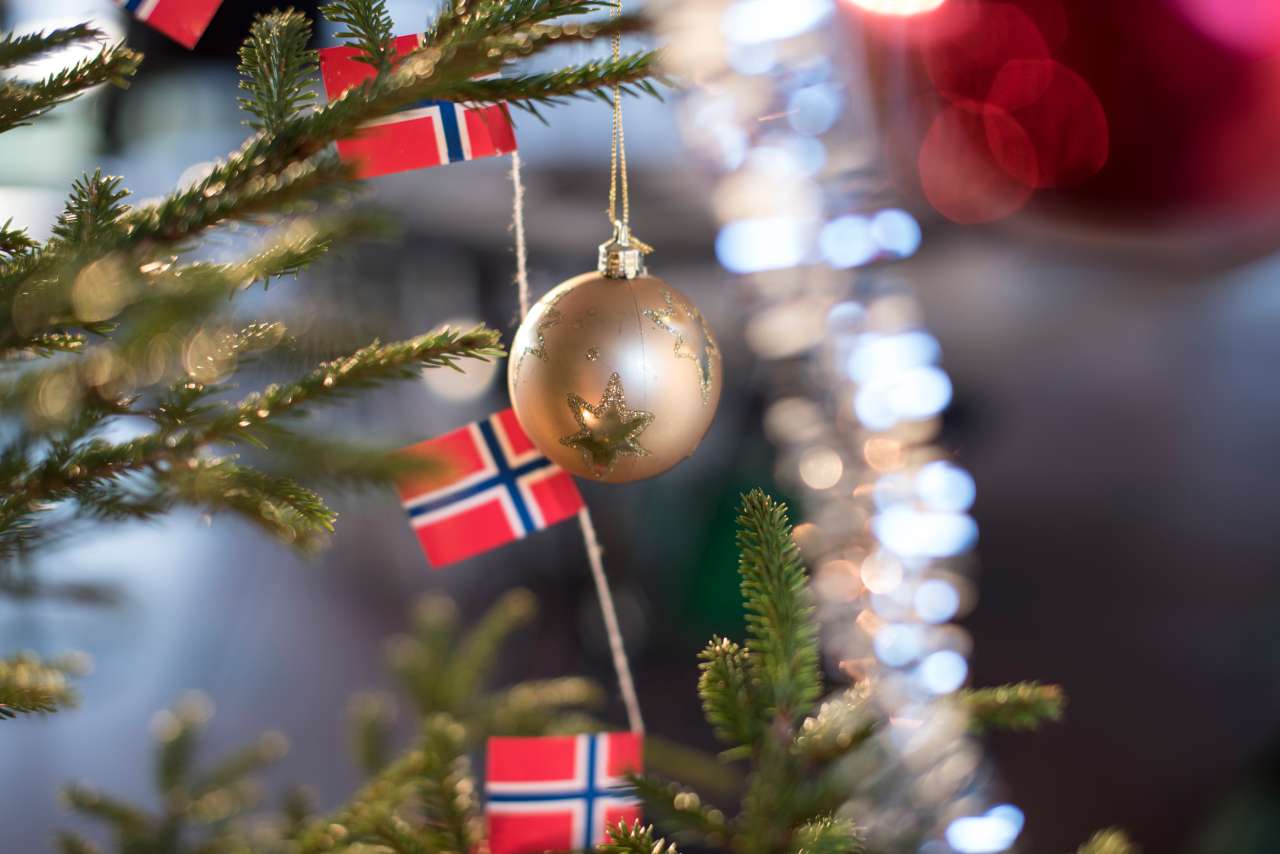
The first Christmas tree was decorated in Christiania (Oslo) in 1822. Photo: Lars Sandved Dalen.
Christmas in Norway is characterised by deep-rooted traditions, many tracing back to pre-Christian times. From brewing Christmas beer to cloudberry cream, pork ribs, and tales of the “nisse”, the holiday season is a fascinating blend of pagan culture, Christian influence, and local culinary resources.
Christmas beer brewing: From Odin to NIBIO
Beer brewing has been an essential part of Norwegian Christmas traditions for over a thousand years. In pre-Christian times, it was mandatory to brew beer in honour of Odin and Thor - two of the most prominent gods in Norse mythology, as part of the winter celebration known as "jol." This tradition continued into the Christian era, but with a dedication to Jesus and Mary. Even today, Christmas beer remains a central part of the festive season, though fewer brew their own.
NIBIO has contributed to revitalising Norwegian beer traditions through several projects. These initiatives explore ancient brewing techniques, Norwegian ingredients like hops and barley, and the traditional Norwegian farmhouse yeast strain kveik.
Hans Geir Eiken, a senior researcher at NIBIO, has played a key role in exploring and preserving the cultural and scientific aspects of kveik. Kveik is unique due to its ability to ferment at higher temperatures while producing distinct flavour profiles, which has made it a valued ingredient in craft brewing. Eiken and his team has documented how different regions of Norway have developed distinct strains of kveik, as well as examining the genetic diversity of kveik strains, and their fermentation properties. NIBIO has also worked to incorporate kveik into modern brewing while pairing it with local ingredients like Norwegian-grown barley, hops, and herbs.
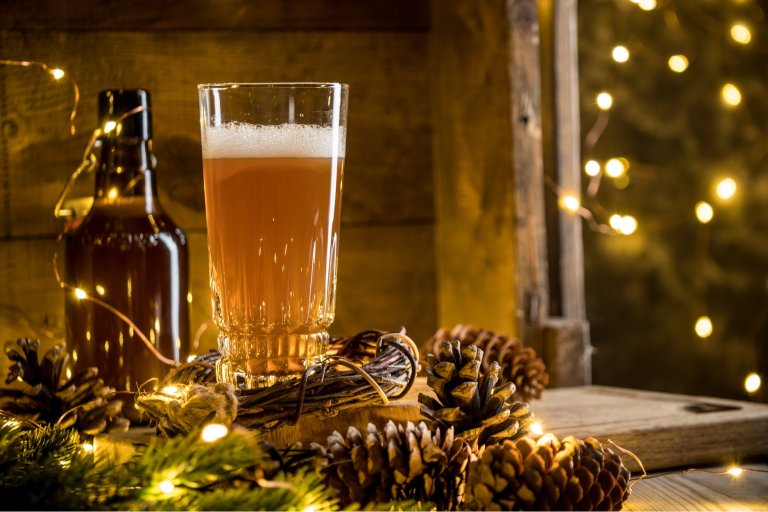
Christmas Eve meal: ribbe, pinnekjøtt and fish traditions
In Norway, Christmas dinner is eaten on the 24th of December and varies greatly by region. However, pork ribs (ribbe) and cured lamb ribs (pinnekjøtt) are the most popular dishes.
“Pork production did not become widespread in Norway until the potato was introduced in the 18th century. Pigs and humans largely compete for the same types of food, and before potatoes became established as a reliable and consistent crop, there wasn’t enough household waste to feed many pigs. As a result, pork ribs is a more recent traditional dish”, explains NIBIO researcher Eva Narten Høberg.
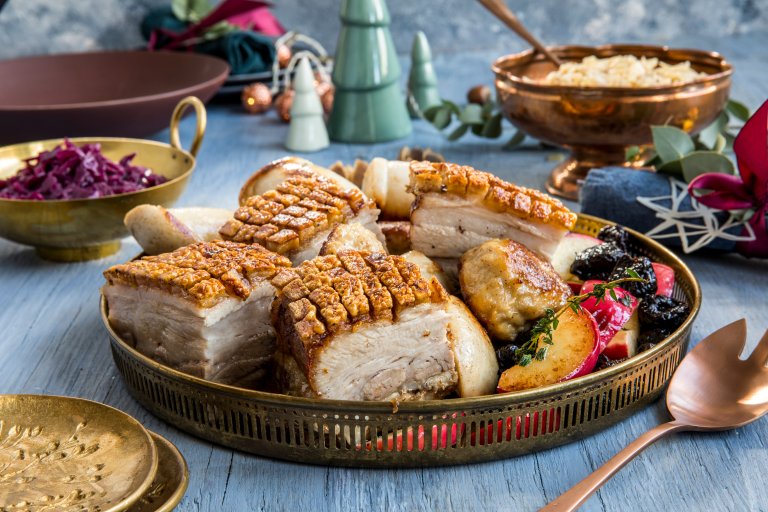
“With ribbe, the meat is not preserved but prepared fresh. Before the advent of vacuum packaging and freezers, this dish needed to be consumed within a reasonable time after the pig was slaughtered. This dish is therefore associated with the spread of cast iron stoves, common from the early 20th century. Today pork ribs are typically served with meat patties (medister), sauerkraut and potatoes”.
“Sheep farming, on the other hand, was a less resource-intensive way to produce meat, as there were always grazing lands available that only livestock could utilise as food. In fact, the sheep was the first domesticated animal in Norway. Pinnekjøtt has roots in traditional outfield farming and preservation methods such as drying and salting. It was originally preserved through drying. As salt became cheaply available through import, it became common to salt the meat before hanging it to dry and cure”, says Narten Høberg.
“The salted and dried lamb ribs are typically steamed over birch branches, which imparts a distinctive flavour. It is usually served with potatoes, sauerkraut and a swede mash.”
“Traditionally, ribbe were more commonly eaten in Eastern Norway, while pinnekjøtt were favoured in Western Norway, the mountain valleys, and further north. Keeping grass-eating livestock was particularly resource-efficient in parts of the country where growing grain was not possible. This is still true today.”
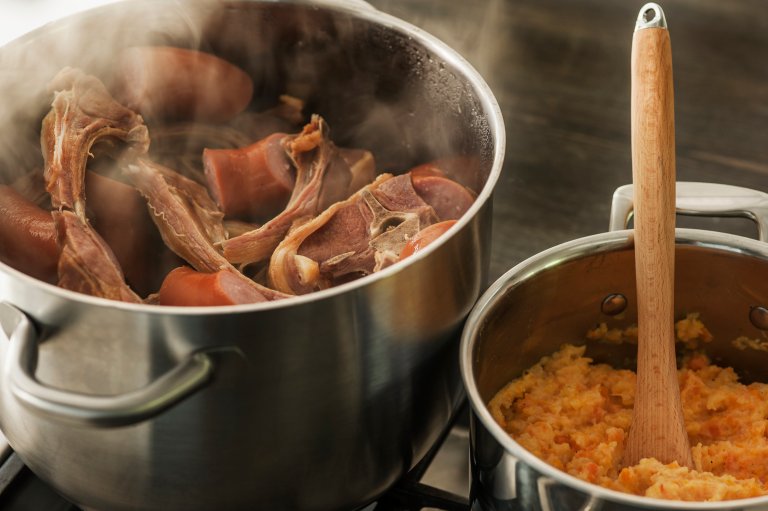
The smell of lutefisk…
Fish dishes, such as cod and lutefisk, have a tradition rooted in Catholic fasting. Before the Reformation, eating meat was forbidden during Advent. While fish plays a smaller role on Christmas Eve today, it remains a common dish during the festive season.
“We exported stockfish during the Viking Age. Norway has always had abundant access to cod, and drying is the oldest preservation method we have”, says Narten Høberg
But as Christmas food, stockfish didn't become significant until it was made into lutefisk. Lutefisk is made from dried fish, typically cod, that has been rehydrated in a lye solution. The fish is then soaked in water to neutralise the lye before being cooked. The result is a gelatinous, mildly salty fish with a unique texture, often served with potatoes, peas, and bacon. It is infamous for its smell - often described as pungent and somewhat sour due to the lye used in its preparation.
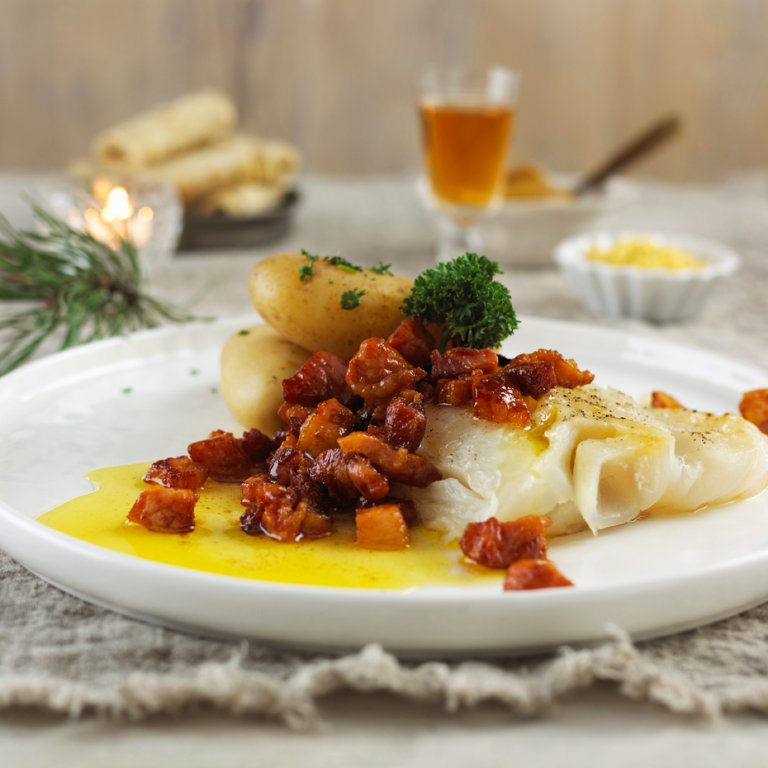
Cloudberries: The Nordic Christmas dessert
Cloudberries (molter) are another important part of Norwegian Christmas tradition. From cloudberry cream to cloudberry jam, these berries are an exclusive ingredient often reserved for the holiday season. They are so exclusive that we even find cloudberries mentioned in Norwegian law.
“We have found detailed descriptions of how landowners were to organise the fair distribution of both cloudberries and lingonberries according to the land register before 1841”, explains Narten Høberg.
“Back then, berries were an important part of the self-sufficient household. Today, cloudberries are more of a taste of tradition and cultural heritage”, she says. But in Northern Norway, there are strict rules for picking cloudberries, a legacy from the self-sufficient households of earlier times.
Cloudberries are also known as "the orange of the North" due to their high vitamin C content.
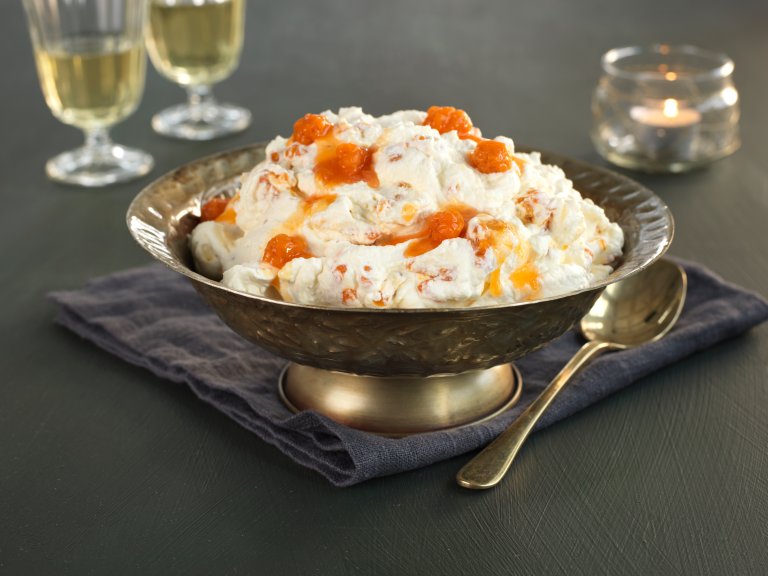
From forest to living room
It is 200 years since the Christmas tree made its way into Norwegian homes. The first Christmas tree was decorated in Christiania in 1822, but many at the time saw it as a form of idol worship and dancing around the golden calf. However, the Christmas tree was here to stay, and today, 90% of all Norwegian households have the tradition of decorating a tree for Christmas and it has become an integral part of the holiday celebrations, according to the organisation Norsk Juletre.
Gå rundt juletreet (literally "walking around the Christmas tree") is a traditional Christmas activity in Norway, where people, especially children, circle the decorated Christmas tree while singing Christmas carols.
Initially, the original tree species that grow in Norway were used as Christmas trees; most commonly spruce, but also pine in areas where spruce was not available. As people’s financial situation improved, there was a growing desire for more variety and species with better needle retention, such as the mountain spruce and Nordmann fir.
Today, many trees come from dedicated cultivation fields, where knowledge and precision are required to ensure healthy, beautiful trees without damage.
NIBIO researcher Martin Pettersson explains how diseases and climate stress can affect the quality of the trees and why the right genetic material is crucial for sustainable Christmas tree farming.
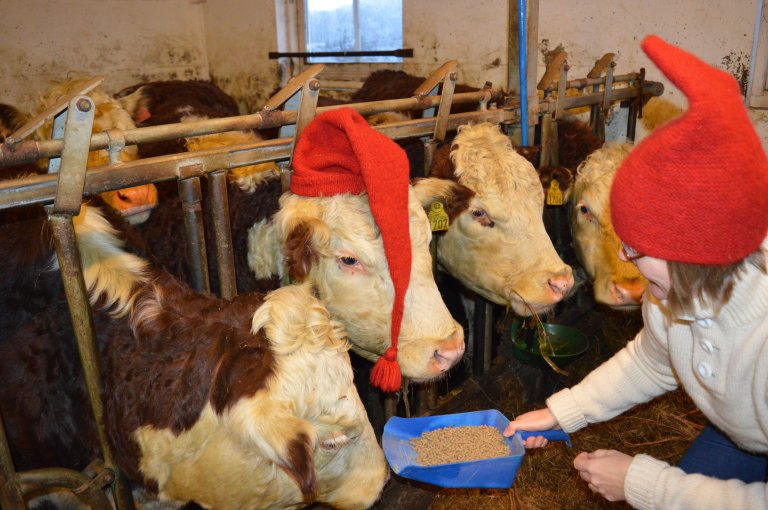
The nisse and Christmas folklore
The nisse, a small grey-clad figure with a red hat and a long beard, has been part of Norwegian folklore since the Middle Ages. The nisse was very strong and helped with farm work if he was treated well. If he wasn't treated well, he became mischievous and could harm people and animals.
The tradition is to give the nisse a bowl of Christmas porridge (risengrynsgrøt) on Christmas eve. This is a traditional dish made from rice, milk, and sugar, often served with a sprinkle of cinnamon and a dollop of butter. It is commonly eaten on Christmas Eve, with a single whole almond hidden inside. The person who finds the almond is said to have good luck in the coming year. The porridge was also traditionally offered to the nisse to ensure his goodwill.
If the porridge was forgotten, the nisse could cause mischief and trouble. While today the farm nisse is mostly a part of tales and Christmas decorations, the tradition of caring for farm animals during Christmas is still very much alive.
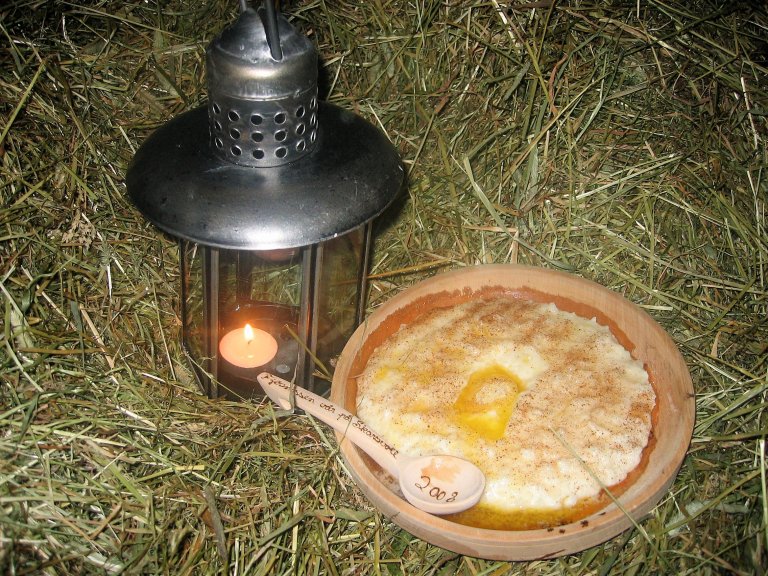
Hazelnuts: A staple in Norwegian Christmas traditions
Hazelnuts have long been a part of Norwegian Christmas traditions. It was once believed that the kernel of a nut could predict the future; a dried-out kernel was seen as a bad omen, while two kernels allowed you to play the game "filipine."
The Norwegian Centre for Genetic Resources (NIBIO) is working to preserve old hazel varieties, both as cultural heritage and for their potential in breeding new, climate-suitable varieties. Hazelnuts were historically used for tools, wickerwork, and barrel hoops, and "wish branches" at Christmas were often made from hazel.
Hazel trees grow across southern Norway up to 600 meters above sea level, and the largest continuous hazel forest in Northern Europe is located in Eikesdal, Møre og Romsdal. Hazelnuts were spread by animals and likely carried by humans during their migrations, with hazelnut shells found in archaeological sites dating back to the Mesolithic period.
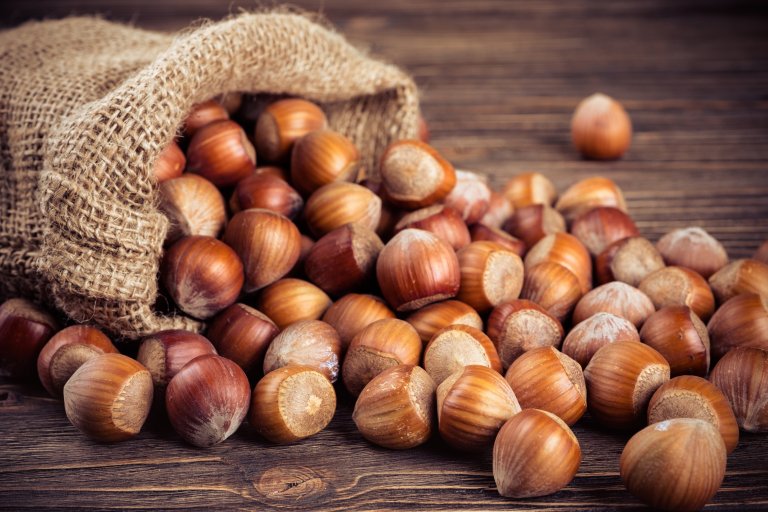
Norway's Christmas bird is the Eurasian bullfinch
The Eurasian bullfinch (dompap) is perhaps Norway’s most iconic Christmas bird. Traditionally depicted on old Christmas cards perched on sheaves of grain, in reality, it prefers sunflower seeds. In many northern countries, birds with red breasts are associated with Christmas, and in Norway, the bullfinch is commonly seen on Christmas decorations and wrapping paper, often set against a snowy backdrop with golden sheaves of grain.
Unlike insect-eating birds, the bullfinch thrives during the winter. It is hardy and can even burrow into the snow to sleep in extreme cold. Most people see it in winter, as it lives a reclusive life deep in coniferous forests during the summer. The bullfinch’s nest is well-hidden, typically in dense spruce plantations. Norway’s population is estimated between 100,000 and 500,000 pairs, with numbers fluctuating in relation to seed yields from spruce and birch trees.
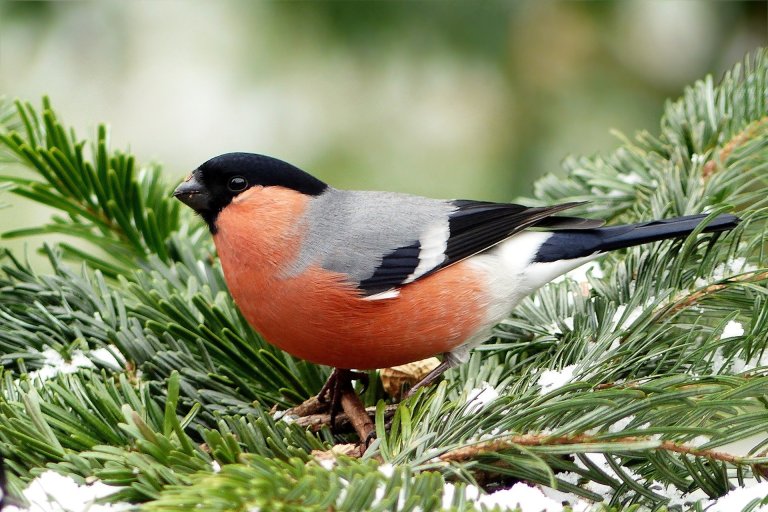
NIBIO and the Norwegian food culture
Norwegian food culture is closely linked to the country’s nature and climate, from mountain pastures to fish-rich waters. As NIBIO’s social researcher Bjørn Egil Flø emphasises, "If these traditions disappear, much of the flavour of Christmas will disappear too."
Whether it’s Christmas beer, pinnekjøtt, or cloudberry cream, Norwegian Christmas traditions celebrate the country’s history, natural resources, and love of food. NIBIO also does work documenting and further developing these traditions ensuring that they remain a living part of our culture for generations to come.
Contacts

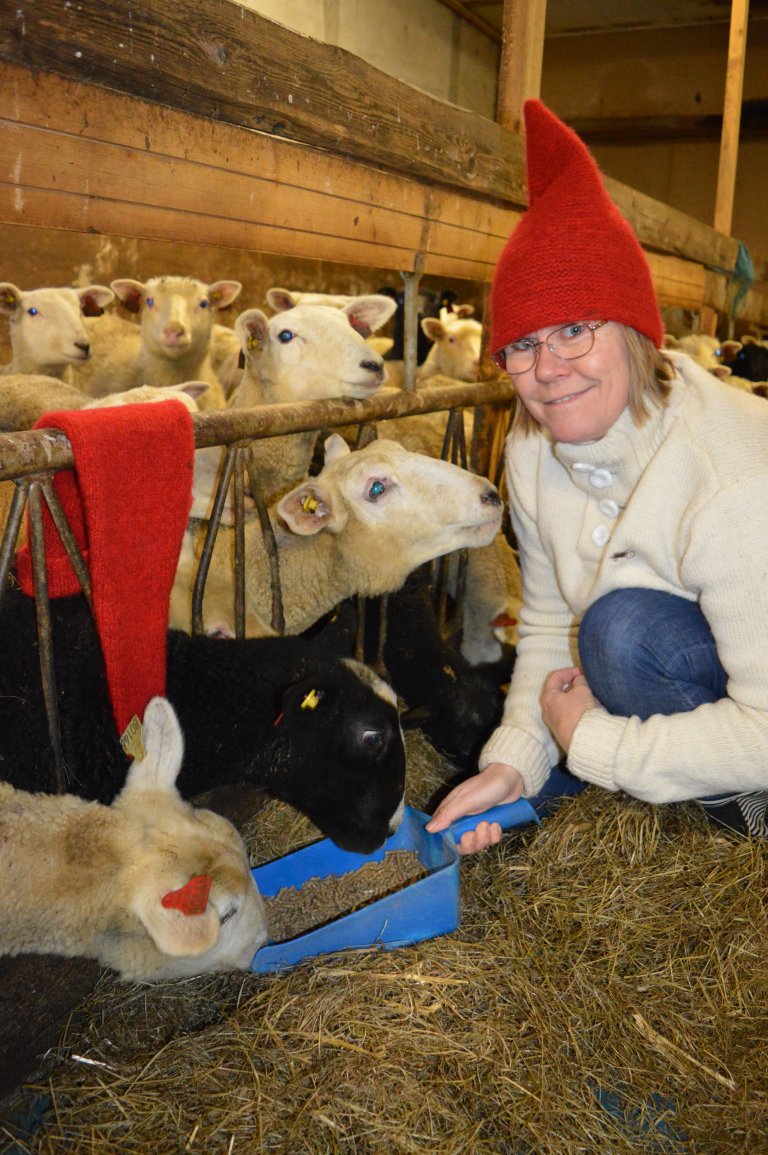
c
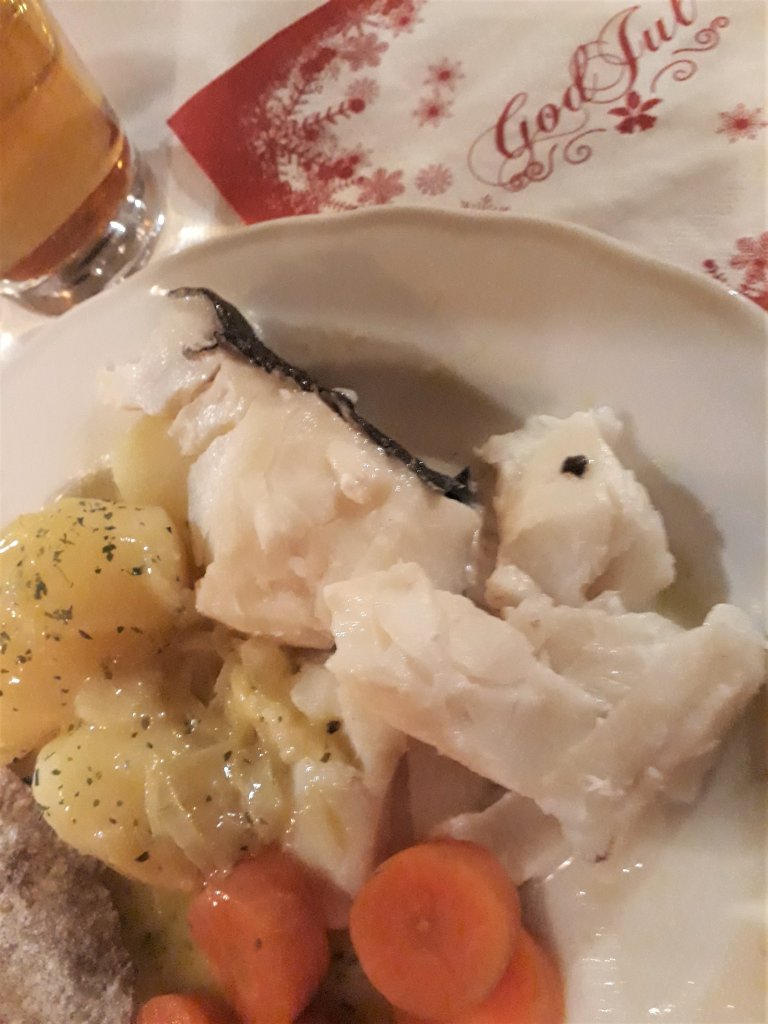
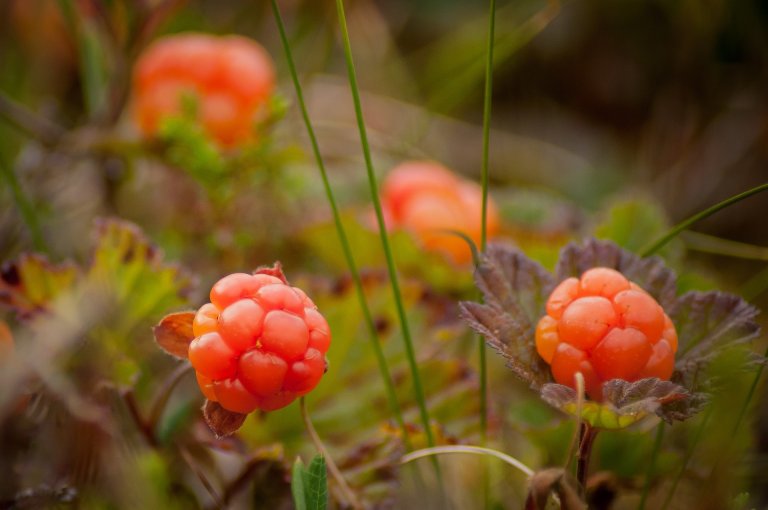
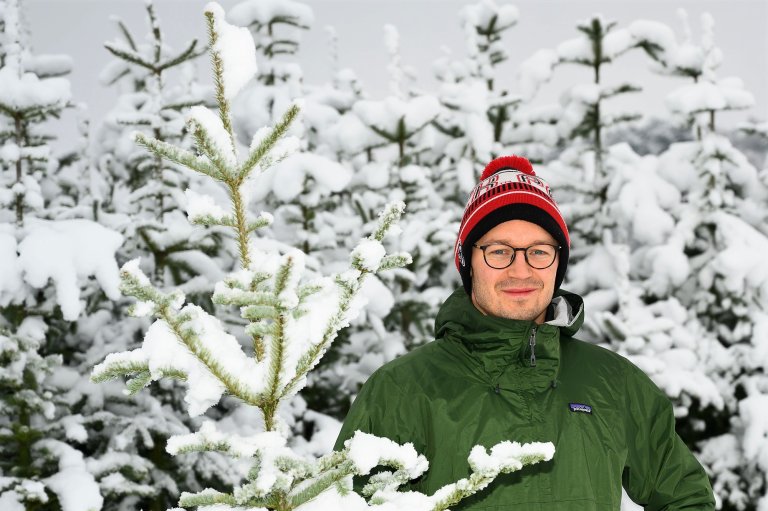
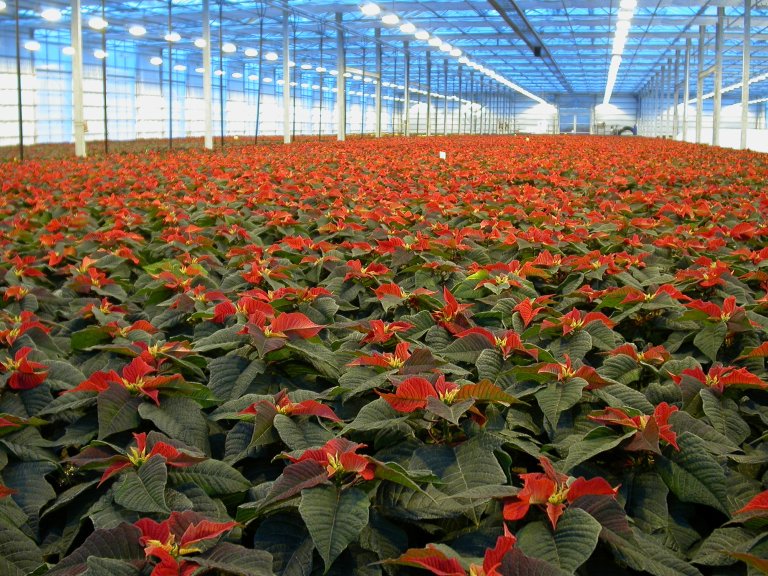
Contacts




